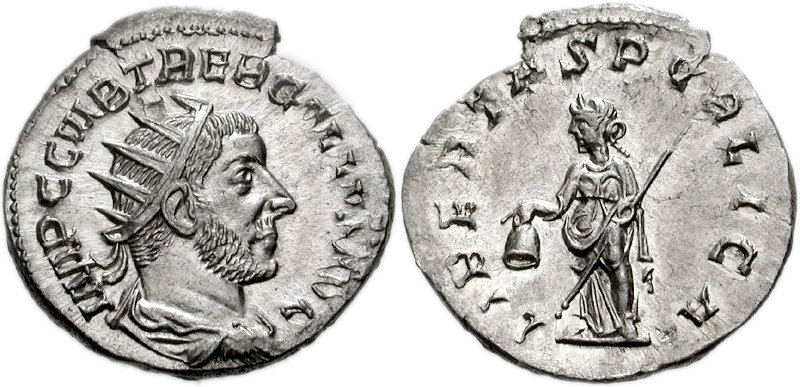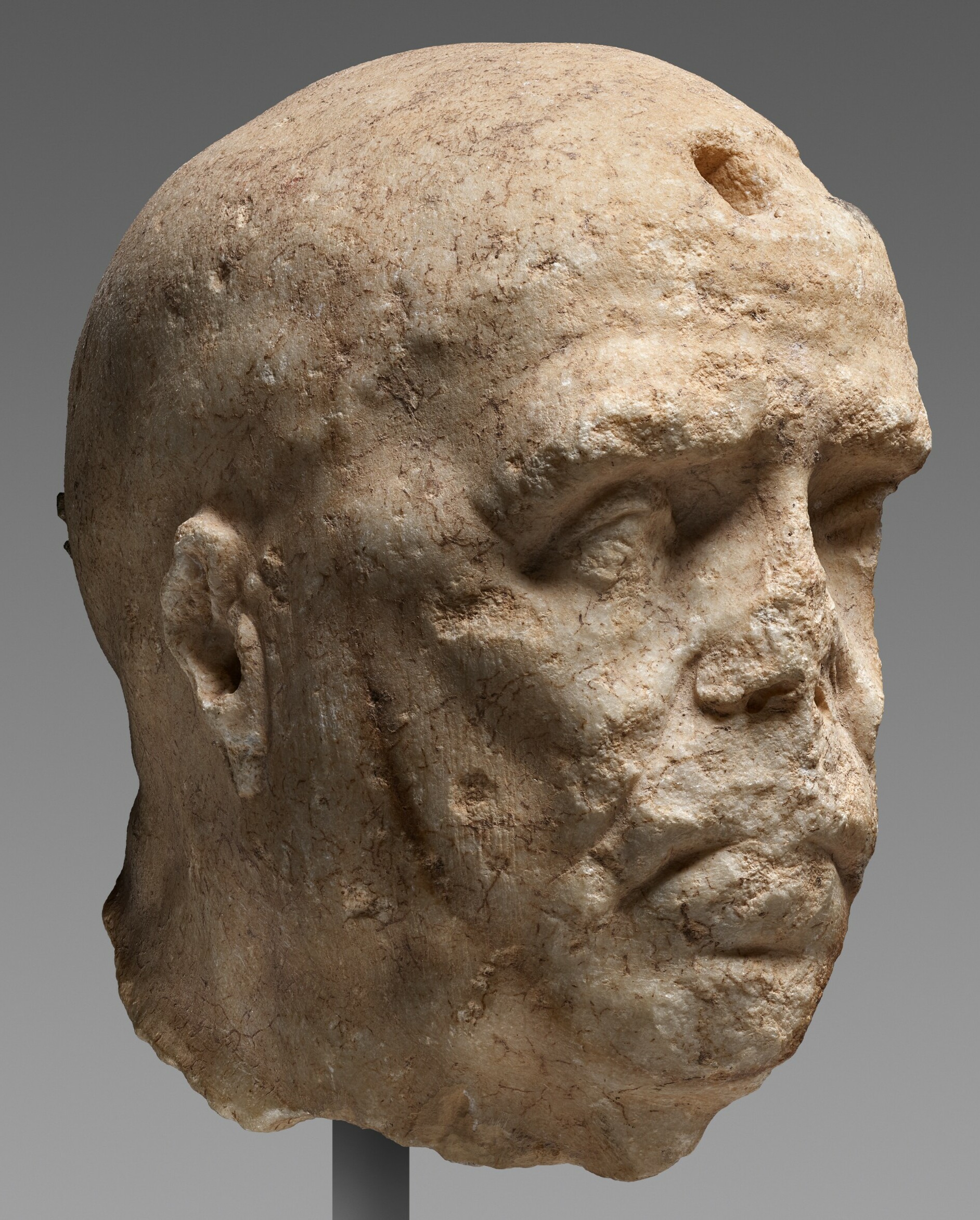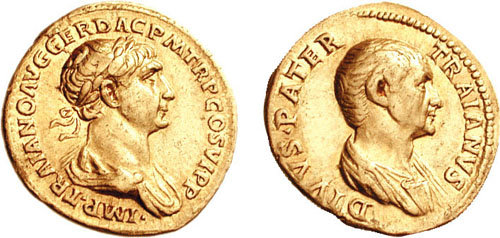|
Libertas
Libertas (Latin for 'liberty' or 'freedom', ) is the Roman goddess and personification of liberty. She became a politicised figure in the late republic. She sometimes also appeared on coins from the imperial period, such as Galba's "Freedom of the People" coins during his short reign after the death of Nero. She is usually portrayed with two accoutrements: the spear; and a phrygian cap, which she holds out in her right hand, rather than wears on her head. The Greek equivalent of the goddess Libertas is Eleutheria, the personification of liberty. There are many post-classical depictions of liberty as a person which often retain some of the iconography of the Roman goddess. Etymology The noun ''lībertās'' 'freedom', on which the name of the deity is based, is a derivation from Latin ''līber'' 'free', stemming from Proto-Italic ''*leuþero-'', and ultimately from Proto-Indo-European ''*h₁leudʰero-'' 'belonging to the people', hence 'free'. Attributes Libertas wa ... [...More Info...] [...Related Items...] OR: [Wikipedia] [Google] [Baidu] |
Liberty (personification)
The concept of liberty has frequently been represented by personifications, often loosely shown as a female classical goddess. Examples include Marianne, the national personification of the French Republic and its values of , and the female Liberty portrayed in artworks, on United States coins beginning in 1793, and many other depictions. These descend from images on ancient Roman coins of the Roman goddess Libertas and from various developments from the Renaissance onwards. The Dutch Maiden was among the first, re-introducing the cap of liberty on a liberty pole featured in many types of image, though not using the Phrygian cap style that became conventional. The 1886 Statue of Liberty (''Liberty Enlightening the World'') by Frédéric Auguste Bartholdi is a well-known example in art, a gift from France to the United States. Ancient Rome The ancient Roman goddess Libertas was honored during the second Punic War (218 to 201 BC) by a temple erected on the Aventine Hill ... [...More Info...] [...Related Items...] OR: [Wikipedia] [Google] [Baidu] |
Phrygian Cap
The Phrygian cap ( ), also known as Thracian cap and liberty cap, is a soft Pointed hat, conical Hat, cap with the apex bent over, associated in Classical antiquity, antiquity with several peoples in Eastern Europe, Anatolia, and Asia. The Phrygian cap was worn by Thracians, Dacians, Persians, Medes, Scythians, Troy, Trojans, and Phrygians after whom it is named. The oldest known depiction of the Phrygian cap is from Persepolis in Iran. Although Phrygian caps did not originally function as liberty caps, they came to signify freedom and the pursuit of liberty first in the American Revolution and then in the French Revolution, particularly as a symbol of Jacobinism (in which context it has been also called a Jacobin cap). The original cap of liberty was the Roman ''Pileus (hat), pileus'', the felt cap of emancipated slaves of ancient Rome, which was an attribute of Libertas, the Roman goddess of liberty. In the 16th century, the Roman iconography of liberty was revived in emblem b ... [...More Info...] [...Related Items...] OR: [Wikipedia] [Google] [Baidu] |
Marcus Junius Brutus
Marcus Junius Brutus (; ; 85 BC – 23 October 42 BC) was a Roman politician, orator, and the most famous of the assassins of Julius Caesar. After being adopted by a relative, he used the name Quintus Servilius Caepio Brutus, which was retained as his legal name. He is often referred to simply as Brutus. Early in his political career, Brutus opposed Pompey, who was responsible for Brutus' father's death. He also was close to Caesar. However, Caesar's attempts to evade accountability in the law courts put him at greater odds with his opponents in the Roman elite and the senate. Brutus eventually came to oppose Caesar and sided with Pompey against Caesar's forces during the ensuing civil war (49–45 BC). Pompey was defeated at the Battle of Pharsalus in 48, after which Brutus surrendered to Caesar, who granted him amnesty. With Caesar's increasingly monarchical and autocratic behaviour after the civil war, several senators who later called themselves ''liberatores'' (liber ... [...More Info...] [...Related Items...] OR: [Wikipedia] [Google] [Baidu] |
Pileus (hat)
The pileus (, ; also or in Latin) was a brimless felt cap worn in Ancient Greece, Etruria, Illyria (especially Pannonia), later also introduced in Ancient Rome. The pileus also appears on Apulian red-figure pottery. The pilos together with the petasos were the most common types of hats in Archaic and Classical era (8th–4th century BC) Greece. In the 5th century BC, a bronze version began to appear in Ancient Greece and it became a popular infantry helmet. It occasionally had a horsehair crest. The Greek pilos resembled the Roman and Etruscan pileus, which were typically made of felt. The Greek () and Latin were smaller versions, similar to a skullcap. Similar caps were worn in later antiquity and the early medieval ages in various parts of Europe, as seen in Gallic and Frankish dress. The Albanian traditional felt cap, the plis, worn today in Albania, Kosovo and adjacent areas, originated from a similar felt cap worn by the ancient Illyrians. A pointed version call ... [...More Info...] [...Related Items...] OR: [Wikipedia] [Google] [Baidu] |
Galba
Galba ( ; born Servius Sulpicius Galba; 24 December 3 BC – 15 January AD 69) was Roman emperor, ruling for 7 months from 8 June AD 68 to 15 January 69. He was the first emperor in the Year of the Four Emperors and assumed the throne following Emperor Nero's suicide. Born into a wealthy family, Galba held at various times the positions of praetor, consul, and governor of the provinces of Gallia Aquitania, Germania Superior, and Africa during the first half of the first century AD. He retired from his positions during the latter part of Claudius' reign (with the advent of Agrippina the Younger), but Nero later granted him the governorship of Hispania. Taking advantage of the defeat of Vindex's rebellion and Nero's suicide, he became emperor with the support of the Praetorian Guard. Galba's physical weakness and general apathy led to his rule being dominated by favorites. Unable to gain popularity with the people or maintain the support of the Praetorian Guard, Galba was mur ... [...More Info...] [...Related Items...] OR: [Wikipedia] [Google] [Baidu] |
Manumission
Manumission, or enfranchisement, is the act of freeing slaves by their owners. Different approaches to manumission were developed, each specific to the time and place of a particular society. Historian Verene Shepherd states that the most widely used term is gratuitous manumission, "the conferment of freedom on the enslaved by enslavers before the end of the slave system". The motivations for manumission were complex and varied. Firstly, it may present itself as a sentimental and benevolent gesture. One typical scenario was the freeing in the master's will (law), will of a devoted servant after long years of service. A trusted bailiff might be manumitted as a gesture of gratitude. For those working as agricultural labourers or in workshops, there was little likelihood of being so noticed. In general, it was more common for older slaves to be given freedom. Legislation under the early Roman Empire put limits on the number of slaves that could be freed in wills (''lex Fufia Ca ... [...More Info...] [...Related Items...] OR: [Wikipedia] [Google] [Baidu] |
Pileus (hat)
The pileus (, ; also or in Latin) was a brimless felt cap worn in Ancient Greece, Etruria, Illyria (especially Pannonia), later also introduced in Ancient Rome. The pileus also appears on Apulian red-figure pottery. The pilos together with the petasos were the most common types of hats in Archaic and Classical era (8th–4th century BC) Greece. In the 5th century BC, a bronze version began to appear in Ancient Greece and it became a popular infantry helmet. It occasionally had a horsehair crest. The Greek pilos resembled the Roman and Etruscan pileus, which were typically made of felt. The Greek () and Latin were smaller versions, similar to a skullcap. Similar caps were worn in later antiquity and the early medieval ages in various parts of Europe, as seen in Gallic and Frankish dress. The Albanian traditional felt cap, the plis, worn today in Albania, Kosovo and adjacent areas, originated from a similar felt cap worn by the ancient Illyrians. A pointed version call ... [...More Info...] [...Related Items...] OR: [Wikipedia] [Google] [Baidu] |
Personification
Personification is the representation of a thing or abstraction as a person, often as an embodiment or incarnation. In the arts, many things are commonly personified, including: places, especially cities, National personification, countries, and continents; elements of the natural world, such as trees, the Deities and personifications of seasons, four seasons, the "four elements", the Anemoi, four cardinal winds, and the Sense, five senses; moral abstractions, especially the four cardinal virtues and seven deadly sins; the nine Muses; and Personifications of death, death. In many polytheistic early religions, deity, deities had a strong element of personification, suggested by descriptions such as "god of". In ancient Greek religion, and the related ancient Roman religion, this was perhaps especially strong, in particular among the minor deities. Many such deities, such as the or tutelary deities for major cities, survived the arrival of Christianity, now as symbolic personif ... [...More Info...] [...Related Items...] OR: [Wikipedia] [Google] [Baidu] |
Eleutheria
The Greek word "ἐλευθερία" (capitalized Ἐλευθερία; Attic Greek pronunciation: ), transliterated as eleutheria, is a Greek term for, and personification of, liberty. Eleutheria personified had a brief career on coins of Alexandria. In Ancient Greece, Eleutheria was also an epithet for the goddess Artemis, and as such she was worshipped in Myra of Lycia. The Roman equivalent of the goddess Eleutheria is Libertas, a goddess in her own right, and a personification of liberty. Etymology For R. F. Willets, Cretan dialect 'Eleuthia' would connect Eileithyia (or perhaps the goddess "Eleutheria") to Eleusis. The name is probably related with a city in Crete named Eleutherna. Walter Burkert believes that Eileithyia is the Greek goddess of birth and that her name is pure-Greek. However the relation with the Greek prefix ' is uncertain, because the prefix appears in some Pre-Greek toponyms like ' ( Eleutherna). Hyginus describes Eleutheria as a daughter of Zeus an ... [...More Info...] [...Related Items...] OR: [Wikipedia] [Google] [Baidu] |
Livy
Titus Livius (; 59 BC – AD 17), known in English as Livy ( ), was a Roman historian. He wrote a monumental history of Rome and the Roman people, titled , covering the period from the earliest legends of Rome before the traditional founding in 753 BC through the reign of Augustus in Livy's own lifetime. He was on good terms with members of the Julio-Claudian dynasty and was a friend of Augustus. Livy encouraged Augustus’s young grandnephew, the future emperor Claudius, to take up the writing of history. Life Livy was born in Patavium in northern Italy, now modern Padua, probably in 59 BC. At the time of his birth, his home city of Patavium was the second wealthiest on the Italian peninsula, and the largest in the province of Cisalpine Gaul (northern Italy). Cisalpine Gaul was merged into Italy proper during his lifetime and its inhabitants were given Roman citizenship by Julius Caesar. In his works, Livy often expressed his deep affection and pride for Patavium, and the ... [...More Info...] [...Related Items...] OR: [Wikipedia] [Google] [Baidu] |
Trajan
Trajan ( ; born Marcus Ulpius Traianus, 18 September 53) was a Roman emperor from AD 98 to 117, remembered as the second of the Five Good Emperors of the Nerva–Antonine dynasty. He was a philanthropic ruler and a successful soldier-emperor who presided over one of the greatest military expansions in Roman history, during which, by the time of his death, the Roman Empire reached its maximum territorial extent. He was given the title of ('the best') by the Roman Senate. Trajan was born in the of Italica in the present-day Andalusian province of province of Seville, Seville in southern Spain, an Italic peoples, Italic settlement in Hispania Baetica; his came from the town of Todi, Tuder in the Regio VI Umbria, Umbria region of central Italy. His namesake father, Marcus Ulpius Traianus (father of Trajan), Marcus Ulpius Traianus, was a general and distinguished senator. Trajan rose to prominence during the reign of Domitian; in AD 89, serving as a in , he supported t ... [...More Info...] [...Related Items...] OR: [Wikipedia] [Google] [Baidu] |
Junia Gens
The gens Junia or Iunia was one of the most celebrated families of ancient Rome. The gens may originally have been patrician (ancient Rome), patrician, and was already prominent in the last days of the Roman Kingdom, Roman monarchy. Lucius Junius Brutus was the nephew of Lucius Tarquinius Superbus, the seventh and last king of Rome, and on the expulsion of Tarquin in 509 BC, he became one of the first Roman consul, consuls of the Roman Republic.''Dictionary of Greek and Roman Biography and Mythology'', vol. II, p. 658 ("Junia Gens"). Over the next several centuries, the Junii produced a number of very eminent men, such as Gaius Junius Bubulcus Brutus, three times Roman consul, consul and twice Roman dictator, dictator during the period of the Samnite Wars, as well as Marcus Junius Brutus, Marcus and Decimus Junius Brutus Albinus, Decimus Junius Brutus, among the leaders of the conspiracy against Caesar. Although the Junii Bruti disappeared at the end of the Republic, another f ... [...More Info...] [...Related Items...] OR: [Wikipedia] [Google] [Baidu] |











